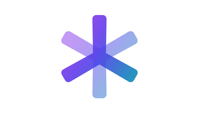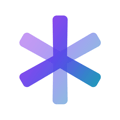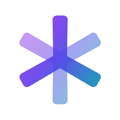From App Store Newbie to $35,000+ in Profit
Note from Caleb: This is a guest post by Nathan Barry, an accomplished iOS designer who builds beautiful apps.
In this essay he discusses the positioning and differentiation lessons he has learned through the Apple App Store that are just as important across all kinds of entrepreneurship. He discusses why building something that helps people, pricing at a premium, and launching early were main reasons why he has seen so much success.
Take it away Nathan.
At 5:00 AM on a Saturday morning I was waiting at the Boise Airport to go to work for the day. But that day, work included flying to Portland early in the morning, buying a stack of iPads, testing and fixing our software, and then flying home. That day was April 4th, 2010, the day the iPad was released. Most importantly, it marked the beginning of my journey towards passive income.
I led the design team for Unity Media Group, a web software startup in Boise, Idaho. We had developed an iPad app for patient education to be used by our hospital clients. There were only a couple of problems:
- We didn’t have any experience developing for the iPhone or iPad.
- The iPad wasn’t released at the time, so we developed an app based purely in the simulator.
- There wasn’t an Apple store in Boise at the time, so we couldn’t purchase the iPad the day it was released.
So, we contracted Small Society, an iPhone development shop out of Portland, to help us build our new iPad app. I did the design work in Photoshop, other members of our team did the server side work, and Small Society pulled it together into a finished application.
The app was successful; we were able to test in on the iPad that morning and only found a couple of minor bugs. With that success under our belts we took our 12 newly purchased iPads and flew home. Turns out the TSA gives you a lot of funny looks when you send that many iPads through the scanner. But they didn’t give us any problems.
Continued Education
When the next iPhone design project came up at Unity I jumped on it. At this point I was very interested in the platform, but didn’t have any experience with Interface Builder or the Objective-C programming language. So, I did all of the design in Photoshop, but also helped with implementing the user interface in code wherever I could. Since I didn’t know much, my contributions were slow, but it helped me learn the platform.
On the next project I got involved on a deeper level, venturing into the code every time, learning as I went. After doing design and limited (interface related) code for work apps and an app for a friend I was ready to tackle my own project.
What I Learned: Push yourself with each new step. You’ll be amazed with what you can learn over time.
Making it Personal and Meaningful
In September 2010 I started my own project called OneVoice, a speech generating app for people with disabilities. Taking my design and usability background I was able to create something clean and usable in an industry that had been plagued for years by bad design and impossibly complicated software. For this project I was able to write about half the code and hire (or trade design work) with programmer friends for the other half.
Having true ownership of a project gave me even more drive to learn and test my limited skills. Having an actual project goal to work towards is the best way to learn.
What I Learned: Start your own projects as soon as possible. Build something that is useful to others.
Prepping for Launch
As I got OneVoice closer to launch I started thinking about pricing. In the App Store most people think of $1 as a standard price, perhaps going as high as $10 for a “premium” app. At first I considered a similar low price, until I talked to a couple speech language pathologists, the professionals who use these kinds of tools with their clients. They pointed out that the dedicated hardware devices my app was replacing cost between $7,000 and $10,000. Though insurance often covered a significant amount, the client would be left paying at least a couple thousand dollars.
So I decided on a simple price of 10% of the competition. Since the iPad cost $500, I would charge $199 for OneVoice. The total for both added up $700 or 10% of the dedicated devices I wanted to replace.
A high price also allowed me to justify spending time creating the best application possible. If I chose a low price and only a few people purchased it then I wouldn’t have the resources to continue developing improvements.
What I Learned: Price based on value. Don’t be afraid to charge a premium.
Launch and Feedback
I launched January 18th, 2011, making ~$450 in profit the first day. From there I started contacting every speech language pathologist I could and offering them a free copy in trade for feedback. Not having worked in this industry before I knew that I needed industry professionals to tell me what I had missed. Giving away copies of a $200 app was a good way to do that. After the feedback started coming in I made changes and released revisions as quickly as possible. I really took the “release early, release often” principle to heart with great results.
By talking to the customers and not thinking I had all the answers, I was able to create a better product and get it to market sooner. It also showed me that there was a real market and that further time invested would be profitable.
What I Learned: Launch early; get as much feedback as possible.
The Next Idea
OneVoice continued selling well and I periodically released new updates to incorporate feature requests. But by September of last year I was ready to work on a new app. I started on Fluent, a memorization app for the iPhone. At the core it has a delayed repetition system so that the cards you get right more often are shown less frequently. On the flip side, cards you really need to practice are shown more often. The system makes sure that once you enter in a card you won’t forget it.
I created an app I really liked, and used every day, though once it was released (for $2) it sold very few copies. I tried getting sites to write reviews and promote the app but no one was interested. I believe that is because I couldn’t effectively communicate the value of the application. If I spend time to really explain how the app works, people really get it and love the concept. But without that explanation people just see it as another flash cards application.
In the 9 months Fluent has been on the App Store it has only generated about $60 in revenue.
What I Learned: Learn to succinctly convey the value of your application.
A New App
Shortly after releasing Fluent I turned my attention to a new idea. A few years before I read an article on Lifehacker called Jerry Seinfeld’s Productivity Secret. The basic idea was that if you want to get good at something you should do it every day. Seinfeld’s commitment was writing jokes. He used a large wall calendar that showed the entire year all on one page.
 Each day he wrote jokes he would make a large X on that day. In a week he would have a chain. Each day that he made progress the chain grew. Before long he would have 20+ days in a row. Then the motivation becomes not breaking the chain. If he wrote jokes for 30 days in a row then he could find the energy to do it one more day.
Each day he wrote jokes he would make a large X on that day. In a week he would have a chain. Each day that he made progress the chain grew. Before long he would have 20+ days in a row. Then the motivation becomes not breaking the chain. If he wrote jokes for 30 days in a row then he could find the energy to do it one more day.
I loved this idea and started using it myself. So, the next challenge was to write it into an iPhone app with reminders and other features to keep you on track. That’s when Commit was born. I worked on a simple design that captured the essence of the idea without adding complexity.
What I Learned: Start with an idea that you care about. Other people will too.
A New Year
By mid-December I had a nearly finished version of Commit that I had developed myself (an accomplishment I was quite proud of), but it still had a few bugs that prevented me from releasing it. Unable to fix them myself I talked to Chris Brandsma, a good friend and former co-worker. In a couple hours at his house on a Saturday afternoon we had worked through the issues and he taught me some more programming tips.
After rushing through a few more changes the app was ready to go, luckily just in time to release before the new year. I knew blogs would be writing a lot of posts about New Year’s resolutions, so this was a perfect time to launch.
What I Learned: Find people smarter than you to help when you get stuck.
News Coverage
Commit was released on December 22nd, to mediocre sales numbers. I didn’t expect it to get approved before iTunes Connect closed (on the same day), so I didn’t even have the marketing page up yet. So the first day was spent scrambling to write and design a page that thoroughly explained Commit.
After a couple days I started submitting Commit to the main iOS App Review Sites. The first site to include it was MacLife. They mentioned Commit in an article on the 27th of December. Posts to Hacker News, Tweets by friends with tons of followers, and a few other posts didn’t add up to many sales.
A couple days later I posted to a couple Subreddits with good results. It was well received with a few up-votes and plenty of positive comments.
The big change happened when App Advice posted a review on the 29th. They really liked Commit and it was well timed for New Year’s resolutions. The review went live about 9:00 PM mountain time, so the main sales happened the next day, reaching 598 sales in one day. This also pushed it to #18 in the top-paid productivity apps. Unfortunately, I can’t tell how many sales came from being in that list versus the App Advice review. But since the sales fell in the next couple days I think the App Advice link was worth far more.
What I Learned: Timing is critical. Many sites wouldn’t have given Commit a second look, but they needed to write New Year’s-related posts and Commit was a perfect match.
The Big Sites
A series of posts followed on smaller blogs and sites, but sales didn’t spike again until The Unofficial Apple Weblog wrote a review on January 19th resulting in $300 in sales that day. From there, Lifehacker picked up the article and published their review. The Lifehacker post resulted in two $350 days and lots more great smaller reviews.
Since a Lifehacker article inspired me to create Commit I had contacted them first but didn’t hear anything. They didn’t pay attention until TUAW posted a review.
What I Learned: Reviews cascade on each other. The larger sites read the smaller ones to find stories. Often a review from a smaller site is a great way to get your foot in the door.
Current App Income Status
Since January, 2012 both OneVoice and Commit continue to sell. In 20 months, OneVoice has nearly reached $30,000 in profit. Commit has reached $6,000 in profit. Together they don’t fully pay my bills, but they continue to be a great source of passive income.
3 Reasons You Should Consider Building Apps
Now that you’ve learned from my story, let’s talk about why you might want to create apps.
- Create a new kind of experience. Apps offer an opportunity to create something that is useful to people every day. Whether an app helps kids with autism “speak” or simply reminds someone to stay on track with their goals, even a simple app can have a big impact.
- Engage your fans on a new level. When your content is in your reader’s pocket it allows you to engage them in a more meaningful way. Create an app that helps someone stay on track with their writing schedule, stay in touch with a community, or maintain a fitness regiment. I’m sure there is an app to be created that will keep your fans be more engaged with you and your content.
- Establish a New Passive Income Stream. As you can see from my story, app sales can result in a lot of revenue. From informal conversations with friends my numbers seem to be about the middle of the pack. If you learn from my mistakes and focus on marketing I’m sure you can make more money then I have. There are plenty of apps that barely make money, but this is usually because the app is low quality, doesn’t serve a need, or the developer didn’t spend any time marketing it.
Start Working on Your App Today
Alright, now I’m assuming you aren’t a designer or developer with years of experience building apps, so where can you start? Even before you start searching for a developer to build your idea you can start with tools and skills you have right now.
Find a pen and several sheets of printer paper. On that paper write out a brief summary of what you want your app to do (this could be a simple list of features) and who should use the app. Then start sketching out quick ideas of what each screen would be. When the app first launches what should the user see? What buttons should be on the main screen?
This doesn’t have to be anything fancy, just some quick shapes and text to represent buttons and links. Draw quickly and focus on creating a lot of ideas rather than creating a beautiful drawing.
After you have several example screens sketched you can start to plan how these screens will fit together. This will give you a flow and overall map for your application. This is what you will take to a designer or developer for them to understand and execute your vision.
Even though I know how to design and code, I still follow this process with every idea I have. You have your first step, now get started!
Earn a living doing something you love.
Grow an audience and get paid for your work as an independent creator. Fizzle is where creators come to learn, share and make progress toward their online dreams.
I’ve taken a lot of courses and been involved in several paid communities since I started my business, but I’ve never ever felt like anyone CARED as much about seeing my reach my goals as the Fizzle Team. They show up for me as much as I show up for myself. Thank you SO much, you guys!
 Claire Pelletreau
Claire Pelletreau
ClairePells.com
📓 Articles & Announcements
-
8 Experiments to Spice Up Your Podcasting Routine
Is your podcast routine stuck in a rut? If so, we’ve got just what you need! Jane Portman from Userlist joins us on the blog today to share her podcasting genius. Keep reading for 8 experiments you can try when your podcasting routine needs spicing
-
Introducing Fizzle 2.0
Today is an exciting day for Fizzle. We’re announcing a complete refresh of Fizzle, including every aspect of our user experience – courses, content, live events and more. Since we first opened Fizzle in 2012, we’ve provided thousands of entrepreneurs and creators with training, coaching and community. Today, this refresh marks
-
The Secret to Creating Consistent Content (that nobody’s talking about)
Hands up if you easily create consistent content week after week without fail. My guess? Since you’re reading this article, that’s probably not the case. Despite what you may be thinking – you’re not alone. Lots of content
🎙️ Podcast Episodes
-
The EXITpreneur’s Playbook with Joe Valley
Joe Valley is an Author, Guest Speaker, EXITpreneur, Advisor, and Partner at Quiet Light. He has also built, bought, or sold over half a dozen of his own companies. Over the last nine years, Joe has mentored thousands of entrepreneurs whose goal is to achieve their own eventual exit. He
-
R&D Tax Credits with Tiffany Bisconer
Tiffany Bisconer is a CPA with over 20 years of accounting and tax experience. Tiffany worked with one of the top certified public accounting firms before becoming director of Acena Consulting. She combines her private industry and public accounting experience to work with CPA firms and directly with business owners
-
Behind the Scenes: Fizzle 2.0
This has been an exciting month for Fizzle! We recently announced a complete refresh of Fizzle, including every aspect of our user experience – courses, content, live events and more. Since we first opened Fizzle in 2012, we’ve provided thousands of entrepreneurs and creators with training, coaching and community.




